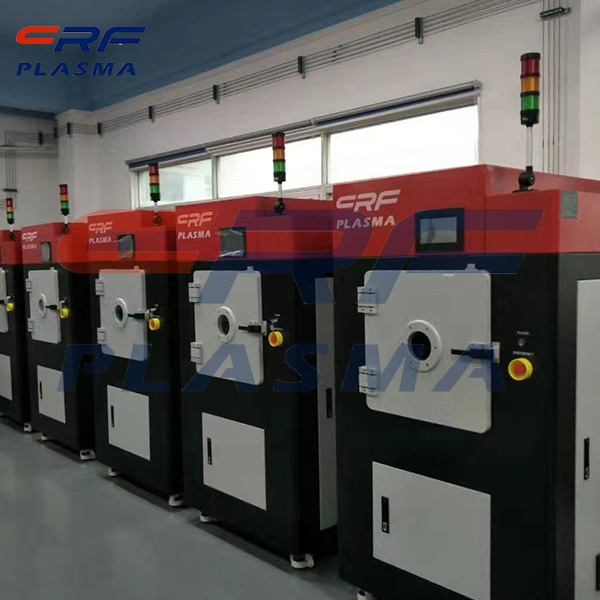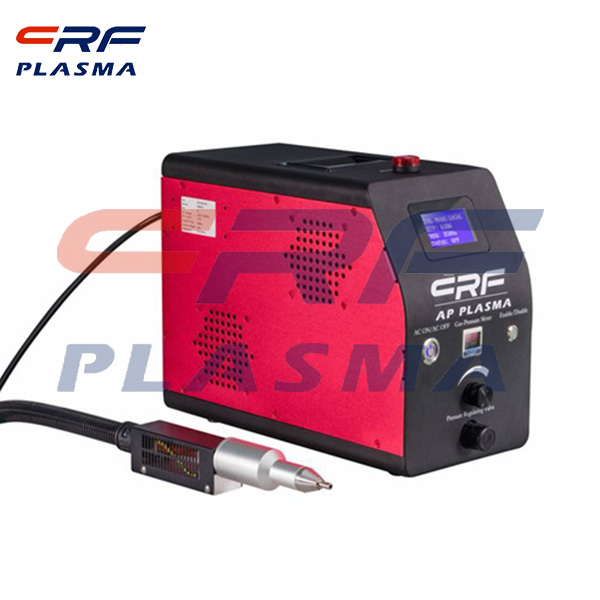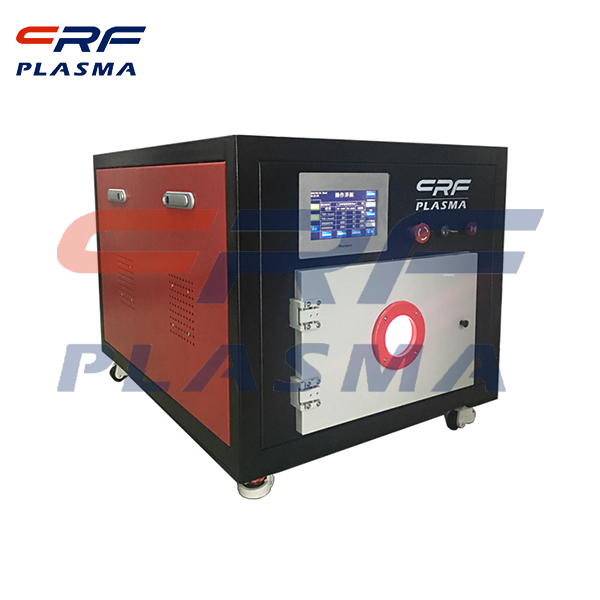
Welcome to Shenzhen Sing Fung Intelligent Manufacturing Co., Ltd.
E-mail:shaobo@sfi-crf.com
Plasma cleaning technology
- Categories:Technical Support
- Author:plasma cleaning machine-surface treatment equipment-CRF plasma machine-Sing Fung Intelligent Manufacturing
- Origin:
- Time of issue:2020-09-07
- Views:
(Summary description)Abstract: Environmental pollution control, personnel labor protection, technology application, in the high-density electronic assembly, precision machinery manufacturing, wet cleaning process is increasingly limited, dry cleaning mechanism and application research is increasingly urgent, plasma cleaning technology in dry cleaning obvious advantages. The main content of this paper is the mechanism of plasma cleaning and the process of low-temperature plasma cleaning. 1. An overview of the Electronic industry cleaning is a very broad concept, including any process related to the removal of contaminants, but the method of cleaning varies greatly from object to object. At present, physical and chemical cleaning methods which have been widely used in the electronic industry can be roughly divided into two types: wet cleaning and dry cleaning. Wet washing has been widely used in electronic industry. Cleaning mainly depends on physical and chemical (solvent) actions. Such as in the chemical active agent adsorption, immersion, dissolution, discrete action supplemented by ultrasonic, spray, rotation, boiling, steam, shaking and other physical action to remove stains, these methods of cleaning function and application range are different, cleaning effect is also different. With the further development of electronic assembly technology and precision machinery manufacturing, higher and higher requirements are put forward for cleaning technology. The cost of wet cleaning is increasing due to the great environmental pollution. Comparatively speaking, dry cleaning has great advantages, especially the cleaning technology based on plasma technology has been gradually applied in semiconductor, electronic assembly, compact machinery and other industries. Therefore, it is necessary to understand the mechanism of plasma cleaning and its application process. 2. Plasma cleaning mechanism Plasma technology, beginning in the 1960 s application in the chemical synthesis, membrane preparation, surface treatment and fine chemical industry and other fields, in large or very large scale integrated circuit technology dry, low temperature, is also developing in recent years the application of plasma polymerization, plasma etching and plasma ashing and dry process technology such as plasma anodic oxidation. Plasma cleaning technology is also one of the progress of drying process. Different from wet cleaning, the mechanism of plasma cleaning relies on the "activation action" of the material in the "plasma state" to remove the object surface stains. From the point of view of various cleaning methods, plasma cleaning is one of the top cleaning methods. Plasma cleaning technology is characterized by both process base material type of object, can be processed, such as metal, semiconductor and oxides and most of the polymer materials (such as polypropylene, polyester, polyimide, poly (ethyl chloride, epoxy, teflon), such as the original base material can handle very well and can realize the overall and partial cleaning and complex structure. One of the important roles of cleaning is to improve the adhesion of the film. For example, Au film was deposited on the Si lining low, and the surface hydrocarbons and other pollution were treated by Ar plasma, which significantly improved the adhesion of Au. After plasma treatment, the matrix surface will leave a layer of gray material containing fluoride, which can be removed with solution. At the same time, it is beneficial to improve surface adhesion and wettability. Free radicals formed by plasma surface activation in the cleaning process can further form specific functional groups, and the introduction of such specific functional groups, especially oxygen-containing functional groups, plays an obvious role in improving the adhesion and wettability of materials. Conventional chemical cleaning in plasma processes has several advantages. Plasmas provide a low temperature environment because they use electrical energy to catalyze chemical reactions rather than heat. Plasma eliminates the danger from wet chemical cleaning and has the advantage over other cleaning methods that there is no waste liquid after cleaning. In short, the plasma process is a simple cleaning process that requires almost no management.
Plasma cleaning technology
(Summary description)Abstract: Environmental pollution control, personnel labor protection, technology application, in the high-density electronic assembly, precision machinery manufacturing, wet cleaning process is increasingly limited, dry cleaning mechanism and application research is increasingly urgent, plasma cleaning technology in dry cleaning obvious advantages. The main content of this paper is the mechanism of plasma cleaning and the process of low-temperature plasma cleaning.
1. An overview of the
Electronic industry cleaning is a very broad concept, including any process related to the removal of contaminants, but the method of cleaning varies greatly from object to object. At present, physical and chemical cleaning methods which have been widely used in the electronic industry can be roughly divided into two types: wet cleaning and dry cleaning. Wet washing has been widely used in electronic industry. Cleaning mainly depends on physical and chemical (solvent) actions. Such as in the chemical active agent adsorption, immersion, dissolution, discrete action supplemented by ultrasonic, spray, rotation, boiling, steam, shaking and other physical action to remove stains, these methods of cleaning function and application range are different, cleaning effect is also different.
With the further development of electronic assembly technology and precision machinery manufacturing, higher and higher requirements are put forward for cleaning technology. The cost of wet cleaning is increasing due to the great environmental pollution. Comparatively speaking, dry cleaning has great advantages, especially the cleaning technology based on plasma technology has been gradually applied in semiconductor, electronic assembly, compact machinery and other industries. Therefore, it is necessary to understand the mechanism of plasma cleaning and its application process.
2. Plasma cleaning mechanism
Plasma technology, beginning in the 1960 s application in the chemical synthesis, membrane preparation, surface treatment and fine chemical industry and other fields, in large or very large scale integrated circuit technology dry, low temperature, is also developing in recent years the application of plasma polymerization, plasma etching and plasma ashing and dry process technology such as plasma anodic oxidation. Plasma cleaning technology is also one of the progress of drying process.
Different from wet cleaning, the mechanism of plasma cleaning relies on the "activation action" of the material in the "plasma state" to remove the object surface stains. From the point of view of various cleaning methods, plasma cleaning is one of the top cleaning methods.
Plasma cleaning technology is characterized by both process base material type of object, can be processed, such as metal, semiconductor and oxides and most of the polymer materials (such as polypropylene, polyester, polyimide, poly (ethyl chloride, epoxy, teflon), such as the original base material can handle very well and can realize the overall and partial cleaning and complex structure. One of the important roles of cleaning is to improve the adhesion of the film. For example, Au film was deposited on the Si lining low, and the surface hydrocarbons and other pollution were treated by Ar plasma, which significantly improved the adhesion of Au. After plasma treatment, the matrix surface will leave a layer of gray material containing fluoride, which can be removed with solution. At the same time, it is beneficial to improve surface adhesion and wettability. Free radicals formed by plasma surface activation in the cleaning process can further form specific functional groups, and the introduction of such specific functional groups, especially oxygen-containing functional groups, plays an obvious role in improving the adhesion and wettability of materials.
Conventional chemical cleaning in plasma processes has several advantages. Plasmas provide a low temperature environment because they use electrical energy to catalyze chemical reactions rather than heat. Plasma eliminates the danger from wet chemical cleaning and has the advantage over other cleaning methods that there is no waste liquid after cleaning. In short, the plasma process is a simple cleaning process that requires almost no management.
- Categories:Technical Support
- Author:plasma cleaning machine-surface treatment equipment-CRF plasma machine-Sing Fung Intelligent Manufacturing
- Origin:
- Time of issue:2020-09-07 10:56
- Views:
Abstract: Environmental pollution control, personnel labor protection, technology application, in the high-density electronic assembly, precision machinery manufacturing, wet cleaning process is increasingly limited, dry cleaning mechanism and application research is increasingly urgent, plasma cleaning technology in dry cleaning obvious advantages. The main content of this paper is the mechanism of plasma cleaning and the process of low-temperature plasma cleaning.
1. An overview of the
Electronic industry cleaning is a very broad concept, including any process related to the removal of contaminants, but the method of cleaning varies greatly from object to object. At present, physical and chemical cleaning methods which have been widely used in the electronic industry can be roughly divided into two types: wet cleaning and dry cleaning. Wet washing has been widely used in electronic industry. Cleaning mainly depends on physical and chemical (solvent) actions. Such as in the chemical active agent adsorption, immersion, dissolution, discrete action supplemented by ultrasonic, spray, rotation, boiling, steam, shaking and other physical action to remove stains, these methods of cleaning function and application range are different, cleaning effect is also different.
With the further development of electronic assembly technology and precision machinery manufacturing, higher and higher requirements are put forward for cleaning technology. The cost of wet cleaning is increasing due to the great environmental pollution. Comparatively speaking, dry cleaning has great advantages, especially the cleaning technology based on plasma technology has been gradually applied in semiconductor, electronic assembly, compact machinery and other industries. Therefore, it is necessary to understand the mechanism of plasma cleaning and its application process.
2. Plasma cleaning mechanism
Plasma technology, beginning in the 1960 s application in the chemical synthesis, membrane preparation, surface treatment and fine chemical industry and other fields, in large or very large scale integrated circuit technology dry, low temperature, is also developing in recent years the application of plasma polymerization, plasma etching and plasma ashing and dry process technology such as plasma anodic oxidation. Plasma cleaning technology is also one of the progress of drying process.
Different from wet cleaning, the mechanism of plasma cleaning relies on the "activation action" of the material in the "plasma state" to remove the object surface stains. From the point of view of various cleaning methods, plasma cleaning is one of the top cleaning methods.
Plasma cleaning technology is characterized by both process base material type of object, can be processed, such as metal, semiconductor and oxides and most of the polymer materials (such as polypropylene, polyester, polyimide, poly (ethyl chloride, epoxy, teflon), such as the original base material can handle very well and can realize the overall and partial cleaning and complex structure. One of the important roles of cleaning is to improve the adhesion of the film. For example, Au film was deposited on the Si lining low, and the surface hydrocarbons and other pollution were treated by Ar plasma, which significantly improved the adhesion of Au. After plasma treatment, the matrix surface will leave a layer of gray material containing fluoride, which can be removed with solution. At the same time, it is beneficial to improve surface adhesion and wettability. Free radicals formed by plasma surface activation in the cleaning process can further form specific functional groups, and the introduction of such specific functional groups, especially oxygen-containing functional groups, plays an obvious role in improving the adhesion and wettability of materials.
Conventional chemical cleaning in plasma processes has several advantages. Plasmas provide a low temperature environment because they use electrical energy to catalyze chemical reactions rather than heat. Plasma eliminates the danger from wet chemical cleaning and has the advantage over other cleaning methods that there is no waste liquid after cleaning. In short, the plasma process is a simple cleaning process that requires almost no management.

Scan the QR code to read on your phone

TEL:0755-3367 3020 / 0755-3367 3019

E-mail:sales-sfi@sfi-crf.com

ADD:Mabao Industrial Zone, Huangpu, Baoan District, Shenzhen


















